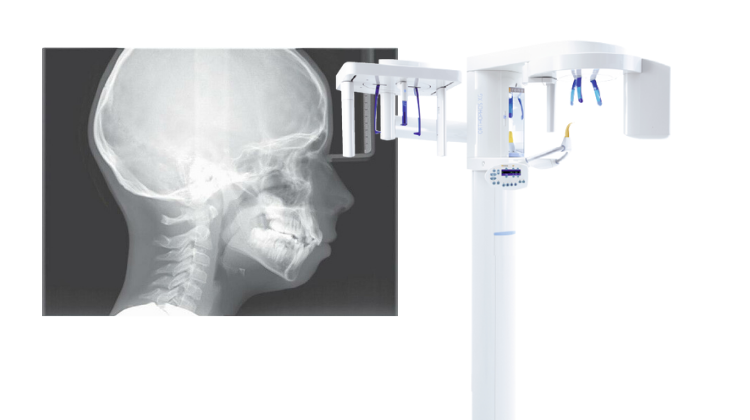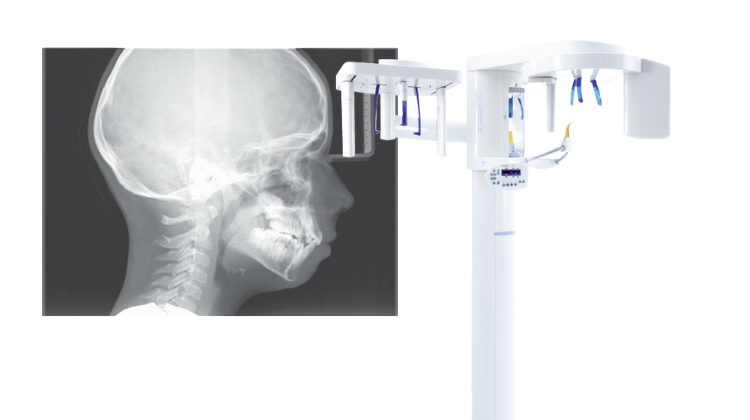Cephalometric X-Ray: Enhancing Orthodontic Diagnosis & Treatment Planning
%20-%202023-05-23T091515.353.png)
Cephalometric X-rays play a vital role in orthodontics, providing valuable insights into the facial and skeletal structures that impact dental alignment. With their ability to capture a comprehensive view of the head and profile, cephalometric X-rays contribute to accurate diagnosis and effective treatment planning. In this article, we will explore the benefits and applications of cephalometric X-rays in orthodontic practice.
Precise Analysis of Skeletal Relationships
Cephalometric X-rays allow orthodontists to assess the skeletal relationships of the jaws and facial structures. By analyzing key landmarks, such as the cranial base, maxilla, mandible, and dental arches, orthodontists can identify discrepancies, such as overbites, underbites, or asymmetries. This information helps in formulating a tailored treatment plan to achieve optimal facial balance and dental alignment.
Assessment of Growth and Development
Cephalometric X-rays provide valuable information about a patient's growth and development patterns. By comparing serial cephalometric X-rays taken at different stages, orthodontists can evaluate the growth trajectory of the facial bones and predict potential orthodontic issues that may arise in the future. This allows for proactive treatment planning and intervention to guide proper jaw growth and prevent the progression of skeletal discrepancies.
Evaluation of Airway and Breathing Patterns
Cephalometric X-rays assist in evaluating airway spaces and breathing patterns. By assessing structures such as the pharynx and nasal passages, orthodontists can identify potential obstructions or constrictions that may contribute to breathing difficulties, sleep apnea, or other respiratory issues. This information helps in designing treatment plans that address both dental and airway concerns, promoting better overall health.
Analysis of Dental Relationships
In addition to assessing skeletal relationships, cephalometric X-rays provide valuable insights into dental alignment and relationships. Orthodontists can evaluate tooth angulations, rotations, and occlusal discrepancies. This information guides the selection of appropriate orthodontic appliances, including braces or aligners, and aids in planning tooth movements for optimal aesthetics and functional bite alignment.
Treatment Planning and Predictability
Cephalometric X-rays significantly contribute to treatment planning by providing orthodontists with a comprehensive understanding of the patient's unique skeletal and dental characteristics. This enables the creation of personalized treatment plans that consider individual needs, goals, and growth patterns. Additionally, cephalometric X-rays aid in assessing treatment progress over time, ensuring that adjustments can be made as needed to achieve desired outcomes.
Conclusion
Cephalometric X-rays are a powerful tool in orthodontics, facilitating accurate diagnosis, comprehensive treatment planning, and predictable treatment outcomes. By evaluating skeletal relationships, growth patterns, airway considerations, and dental alignment, orthodontists can develop customized treatment plans that address the specific needs of each patient. Incorporating cephalometric X-rays into orthodontic practice ensures efficient and effective treatment, resulting in improved aesthetics, functional occlusion, and enhanced overall oral health.
Looking for the best value Ceph X-Ray Machine for your Practice?
In this article, we've outlined everything you need to know to find a Ceph X-ray machine that meets the needs of your practice - without breaking the bank. Check out: The Ultimate Buyer's Guide to Ceph X-Ray Machines.


